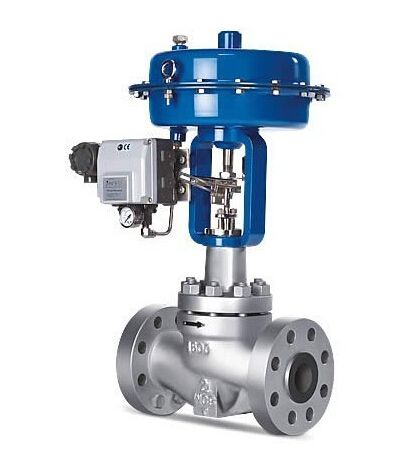The function of the regulating valve cylinder
Regulating valve cylinder uses compressed air as the power source to The cylinder is the actuator, and with the help of Used with accessories such as electrical valve positioners, converters, solenoid valves, and position-keeping valves to drive valves to achieve switching or proportional adjustment, and receive control signals from industrial automation control systems to complete the adjustment of flow, pressure, temperature, etc. of pipeline media. process parameters. The characteristics of pneumatic control valves are simple control, fast response, and intrinsic safety, without the need for additional explosion-proof measures.
The working principle of the regulating valve cylinder
Regulating valve cylinderThe action is divided into two types: air opening type and air closing type. Air to Open type means that when the air pressure on the diaphragm head increases, the valve moves in the direction of increasing opening. When the upper limit of the input air pressure is reached, the valve is in a fully open state. Conversely, when the air pressure decreases, the valve moves in the closing direction. When there is no input air, the valve is fully closed.
Therefore, sometimes air-open valves are also called Fail to Close FC. The action direction of the air to close type is exactly opposite to that of the air to open type. When the air pressure increases, the valve moves in the closing direction;when the air pressure decreases or disappears, the valve moves in the opening direction or until it is fully open. Therefore, it is sometimes called Fail to Open FO. The air opening or air closing of a pneumatic control valve is usually achieved through the positive and negative effects of the actuator and the different assembly methods of the valve structure.

For example, for the combustion control of a heating furnace, the regulating valve is installed on the fuel gas pipeline, and is heated according to the temperature of the furnaceThe temperature of the material at the outlet of the heating furnace controls the supply of fuel. At this time, it is safer to choose an air-open valve, because once the air source stops supply, it is more appropriate for the valve to be closed than to be fully open. If the air source is interrupted and the fuel valve is fully opened, excessive heating may occur. Another example is a heat exchange equipment cooled by cooling water. The hot material is cooled by heat exchange with the cooling water in the heat exchanger. The regulating valve is installed on the cooling water pipe, and the temperature of the material after heat exchange is used to control the amount of cooling water. When the air source is interrupted, the regulating valve should be in the open position for safer safety, and an air-closed (i.e. FO) regulating valve should be used.
The valve positioner is the main accessory of the regulating valve and is used in conjunction with the pneumatic regulating valve. It receives the output signal of the regulator and then uses its output signal to control the pneumatic regulating valve. , when the regulating valve operates, the displacement of the valve stem is fed back to the valve positioner through the mechanical device, and the valve position status is transmitted to the upper system through an electrical signal. Valve positioners can be divided into pneumatic valve positioners, electro-pneumatic valve positioners and intelligent valve positioners according to their structural forms and working principles.
The valve positioner can increase the output power of the regulating valve, reduce the transmission lag of the regulating signal, speed up the movement speed of the valve stem, improve the linearity of the valve, and overcome the problem of valve stem Friction force and eliminate the influence of unbalanced force, thereby ensuring the correct positioning of the regulating valve. Actuators are divided into pneumatic actuators and electric actuators, which are divided into straight stroke and angular stroke. Used to automatically and manually open and close various doors, air panels, etc.
The above isRegulating valve cylinder Function, working principle of regulating valve cylinderContent introduction, if you want to know more related information, please log in to Sunway Pneumaticwww.diancifa .cc view.






 WhatsApp: +8615857777578
WhatsApp: +8615857777578